The path that took us from the tragedy of southern Louisiana to the heart of Texas was one of the longest of the journey. In the nearly 12-hour drive, we prepared to find a more optimistic outlook in the little city of McCamey. That didn't quite happen.
Founded in 1925, with the discovery of oil in the region, the city today calls itself the wind capital of Texas, surrounded by wind turbines that multiply among the oil and gas wells.
But what would have been the harbinger of an innovative municipality, based on the energy transition, gives way to a decadent scenario. McCamey looks like a ghost town, with few people walking the streets, abandoned buildings and almost no cell phone reception.
In its heyday, the city was home to 10,000 inhabitants, most linked to the oil industry. Today, the number of residents does not exceed 2,000, the result of an exodus that began in the 1930s, with the Great Depression and the discovery of new oil fields on the other side of the state.
Many of those who still live there are skeptical about the use of renewable energy or reject the possibility of abandoning fossil fuels. The city's situation is an allegory of how difficult it is to make the energy transition in the USA, where the emission of pollutants has long been seen as a symbol of development.
"I'm pro-oil and pro-gas," says one resident, without entering a conversation. In a few hours, it was already possible to conclude: McCamey, the wind capital of Texas, belongs to oil.
On the morning of that Tuesday, September 28, there were only cars on the streets. It was only possible to see a few people on foot after midday, when a shrill factory whistle warns workers and students that lunchtime has arrived.
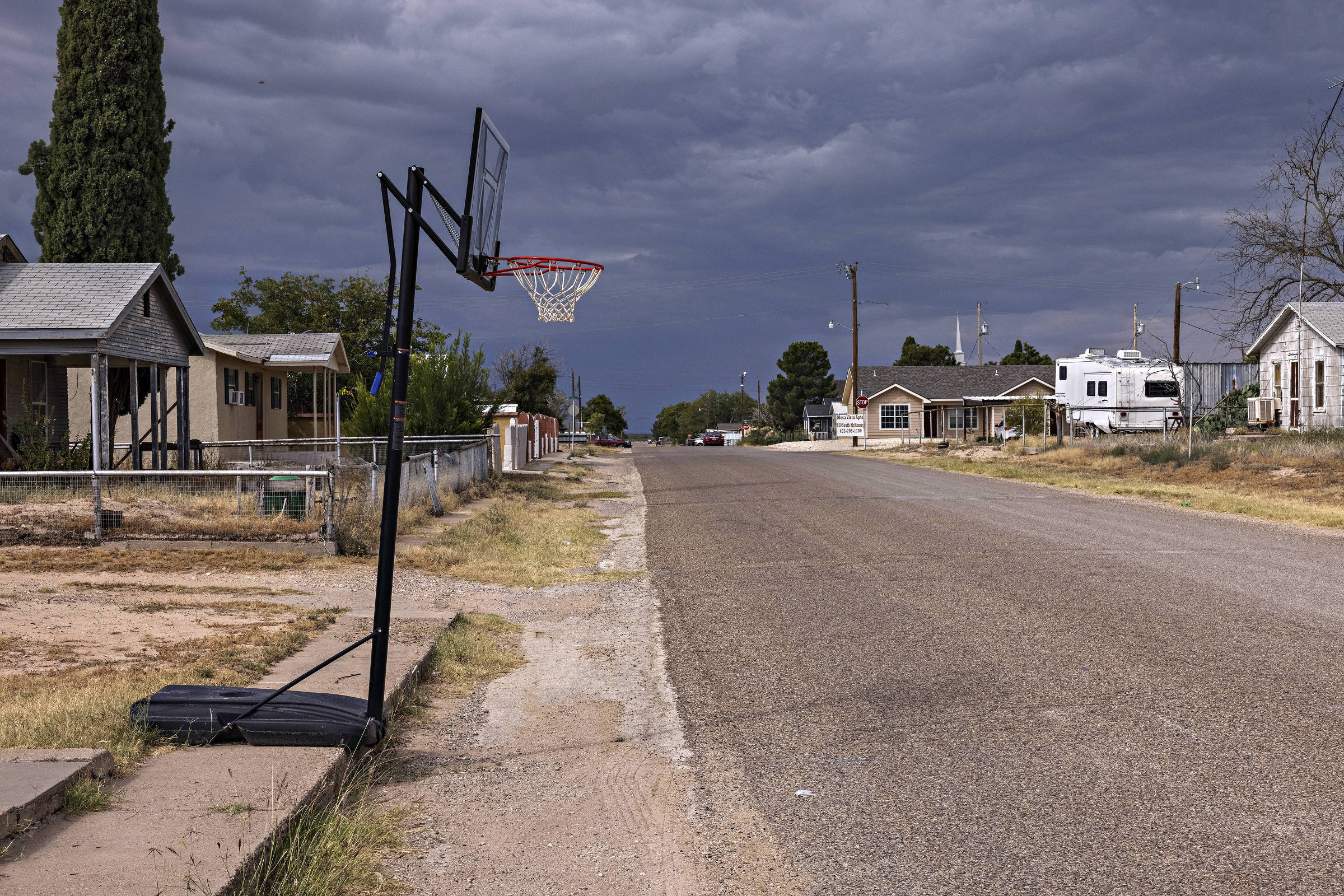
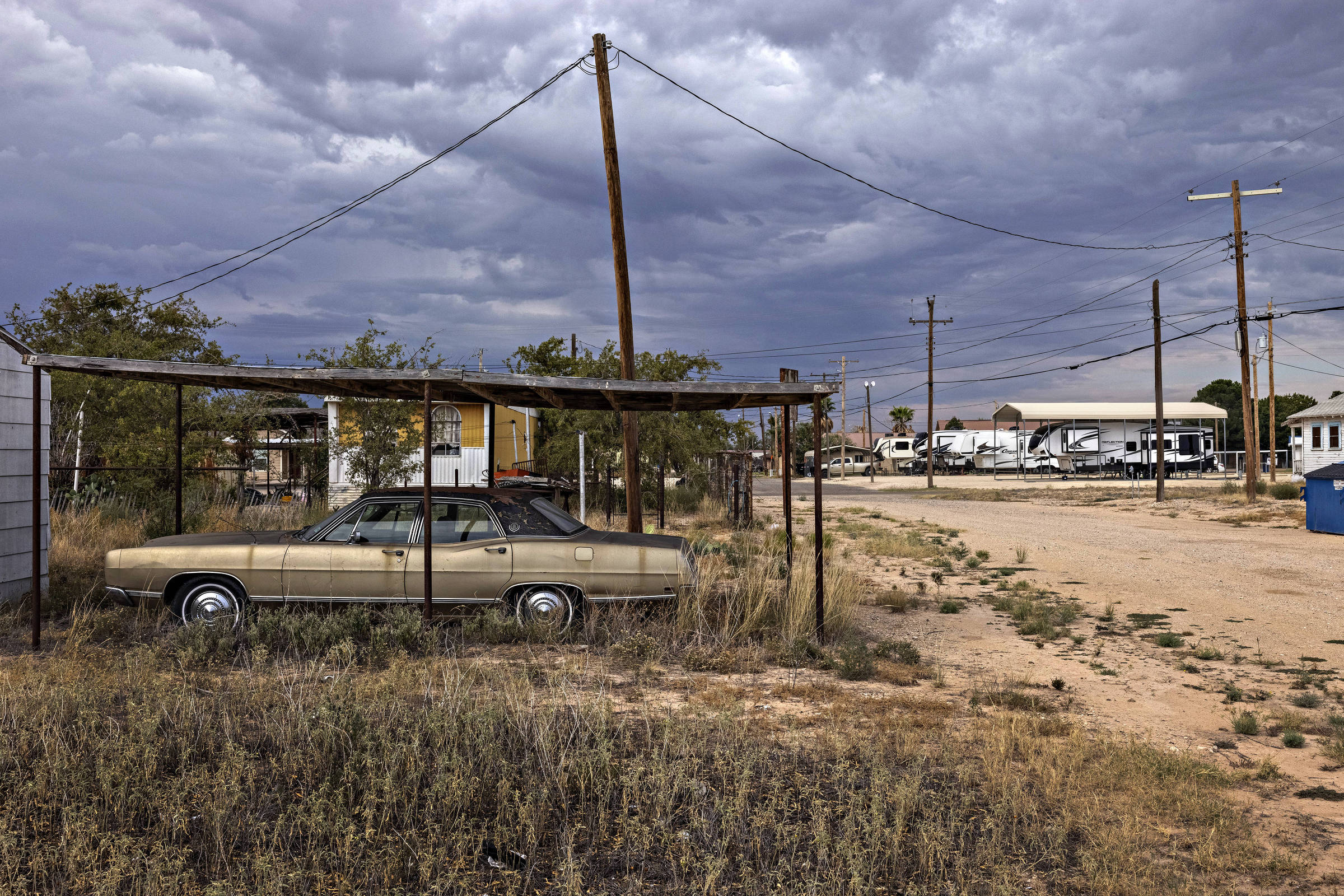
Deserted streets in the town of McCamey, which calls itself the 'Wind Capital of Texas' but is still dependent on fossil fuels Lalo de Almeida/Folhapress
Part of the first group —mostly made up of Latino people— crowds into Elena's Kitchen to eat rice, beans and red meat in a self-service style. Across the street, Burrito Place is a hit with Mexican delicacies.
Ramón Torres, 73, did not eat at any of the restaurants. He used his lunchtime to clean his house, feed corn to the chickens and talk with Folha in his garden.
"Texas wind capital? I've never heard [the nickname], but we have wind power all around here. I just don't know if they use that power here or if they sell it elsewhere."
Ramón works as a cooking oil salesman and complains that the price of his electricity bill has gone up. He says he believes that the fault is with the energy distributors charging more and more, and the heat, which has been even more intense in recent years in a state accustomed to temperatures upward of 40 °C in summer.
"I live with my wife and use electricity for the shower, washing machine and dryer, but mainly for air conditioning, which I turn on every day."
According to him, the solution to reduce spending is not in the use of renewable sources. From his lawn, he points to the neighboring roof, covered in solar panels, and explains why he refuses to adopt the system. "The installation is very expensive, and I'll never finish paying for it. They say the solar panels lower the electricity bill, but I don't know, I'd rather not risk it."
Installing panels in the US can cost from US$15,000 to US$25,000 (R$ 84,000 to R$ 140,000), but there are rental services and public incentives to try to reduce or offset expenses.
For systems introduced by the end of 2022, for example, the federal government offers 26% of the facility's value as a credit on the owner's income tax, and panels are expected to be able to save up to 90% a month on residential utility bills.
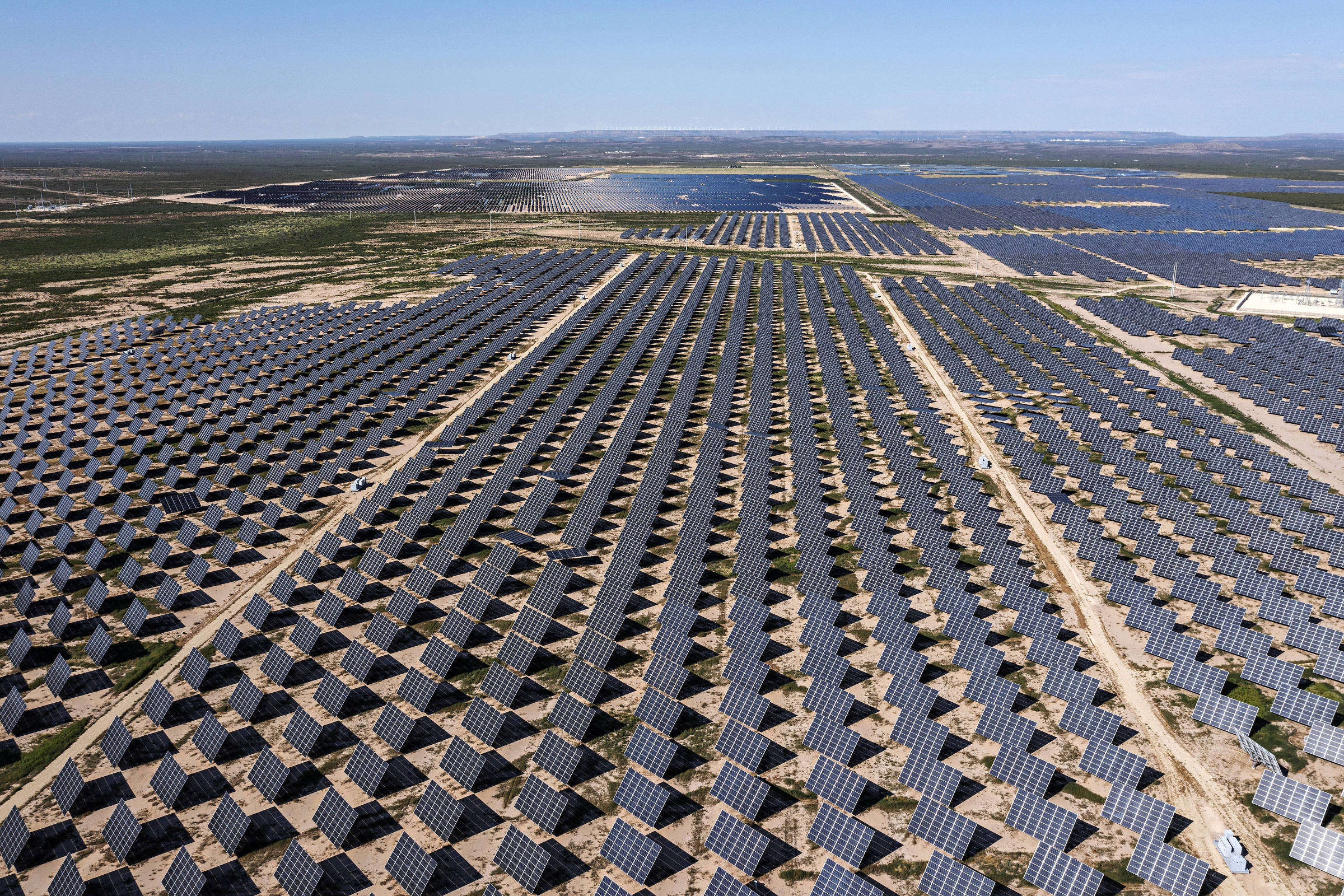
Solar energy farm near McCamey, Texas Lalo de Almeida/Folhapress
In addition to solar panels, McCamey residents can choose the composition of their energy supply, on a chart that varies between 100% oil-based, 50% renewable plus 50% oil, or 100% clean energy. From then on, distributors apply tariffs, which are more expensive as renewable sources come into play.
Conversations with residents had already signaled their preference, but certainty only came after a visit to the city hall. Republican Patty Jones, 54, has been the mayor of McCamey since 2017 and, next year, she is expected to run for another term. As a citizen, she explains, she opted for 100% of the electricity she consumes at home to come from oil.
"It's the cheapest option, and I believe most people in the city chose it for that reason too. If I opted for 100% renewable, there would be a significant difference in my electricity bill —$100 more a month."
While the cost of renewables, such as solar and wind, has fallen around 10% a year over the last three decades —and continues to decrease exponentially—, that of fossil fuels is no longer considered. The more solar and wind farms that are built, the more cost-effective renewable energy will be, and as a result, the fossil fuel industry has pressured policymakers, producers and distributors to delay the process.
Regarding the nickname of Texas's wind capital, the mayor says the label fell on McCamey nearly 20 years ago, when the state's first wind farms started operating there, but confirms that the city is still based on oil and is not a place for pedestrians.
"We're not making an energy transition. Oil is where our money is, where Texas was made and where our jobs are."
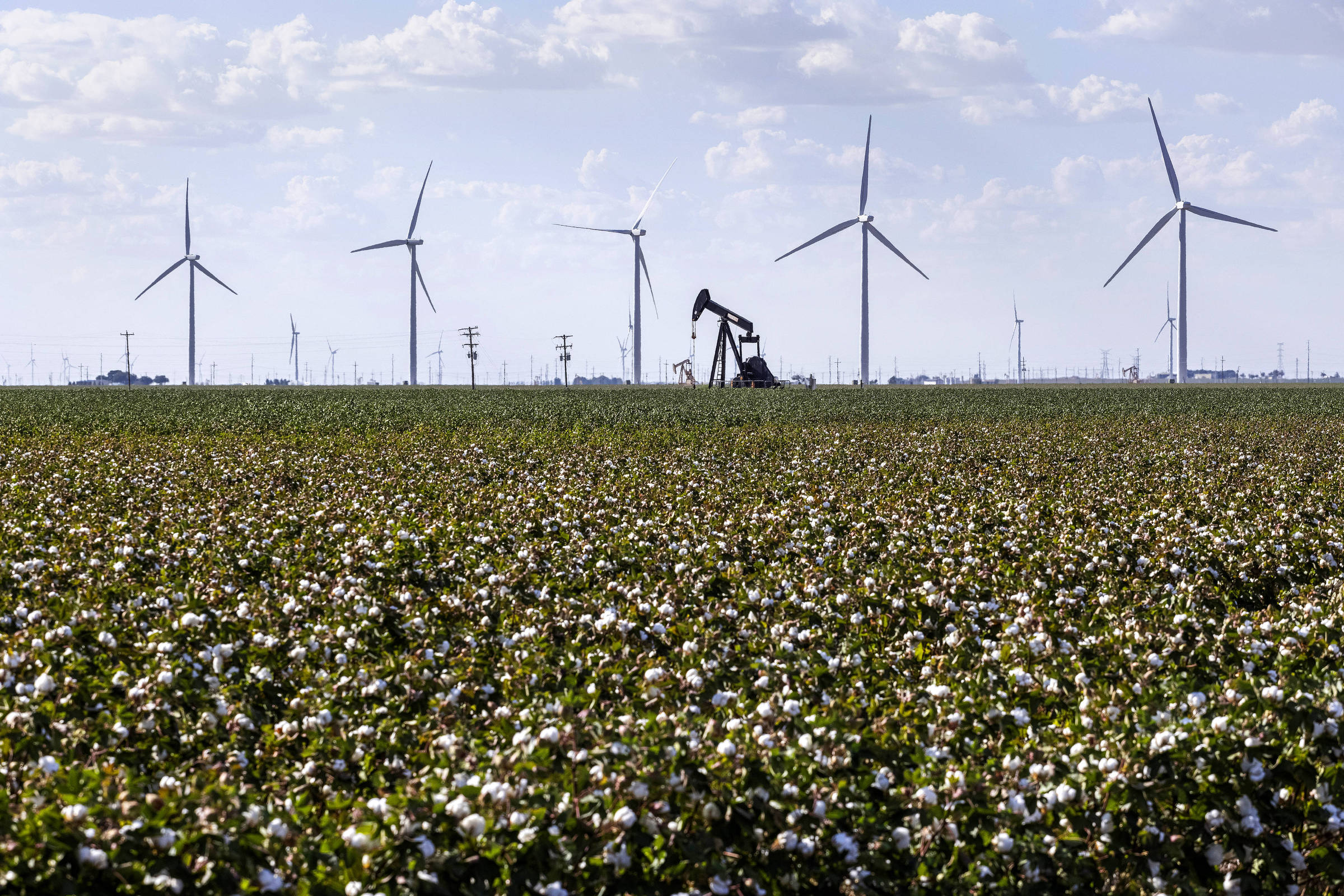
Oil well amid wind power generators near the city of Odessa, Texas Lalo de Almeida/Folhapress
Patty recognizes that wind and solar energy production is booming across the state and encourages job creation, but there is no competition there to match the centenary darling.
Not in the US. For more than a hundred years, fossil fuels have dominated American production and consumption, particularly in the most polluting sectors of industry and transportation.
To give you an idea, last year energy consumption in the US was 35% from oil, 34% from natural gas, 12% from renewable sources —39% of which was biomass, 26% wind, 22% hydroelectric, 11% solar and 2% geothermal— 10% coal and 9% nuclear.
Texas, the largest energy producing and consuming state in the country, works as the great engine of this gear. According to the US Energy Information Agency, the state accounted for 43% of crude oil production and 26% of natural gas traded in the US last year. The 31 refineries in Texas are able to process 5.9 million barrels a day, or 31% of US capacity.
But the state has also excelled in renewable sources and is a national leader in wind power generation, with 28% of all electricity produced in this way in the country in 2020.
Despite the superlatives, Texas experienced one of the worst blackouts in its history earlier this year, once again spurring debate over how wind power —and other renewable sources— can make the state's energy system more efficient.
In February, waves of extreme cold arrived from the Arctic, pushed by the climate crisis, and covered Texas, accustomed to milder temperatures in winter, with snow. Hundreds of people died of cold or as a result of it, and millions were left without electricity, heating and clean water.
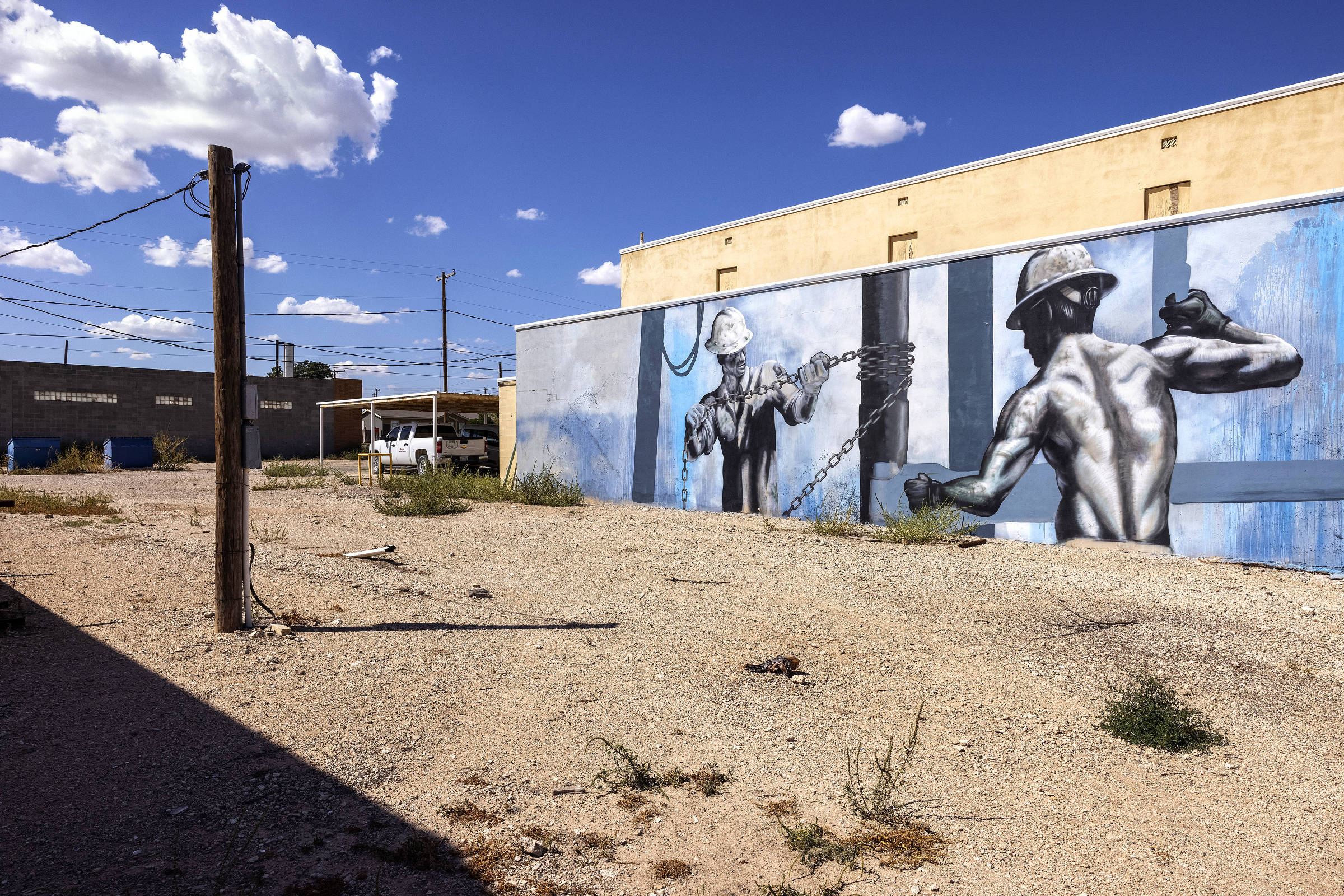
Mural in the city of Rankin, Texas, that references the oil industry Lalo de Almeida/Folhapress
At the time, the state lost 40% of its energy production capacity, with the freezing of several structures, and the material damage was estimated at $20.4 billion, from the capital, Austin, to McCamey.
The episode reflects the grim reality of the second largest state in the US. With 29 million inhabitants, Texas does not have the infrastructure to withstand low temperatures when they hit large parts of the population or its electricity grid.
Since 2002, the state has been the only one in the country to operate an isolated electricity grid, in an attempt to avoid regulation and supervision by the federal government, which means that it does not export excess energy produced, nor does it get help from other states in cases of emergency.
Thus, the traumatic blackout was the result of the combination of the unusual cold —which affected the generation and transport of all types of fuels— with the power grid's inability to obtain supplies from elsewhere.
The crisis was an opening for deniers and conservative politicians to go on TV programs and social networks with the false thesis that renewable sources were to blame for the power outage. The Texas Electrical Safety Council, which manages the system, went public to say that "extreme weather conditions have caused many generating units —on all types of fuel— to shut down and become unavailable."
The agency also added that thermal sources, such as coal, gas and nuclear, lost almost twice as much energy due to the cold as renewable sources.
Conspiracy theories, of course, consider neither facts nor science nor expert judgment. And those that surround the climate crisis are mainly fomented by lobbyists from the fossil fuel industry, who often convince part of the population to repeat preposterous theses.

Deserted street in McCamey, Texas Lalo de Almeida/Folhapress
What we've heard more than once suggests that the trail of white smoke in the sky left by planes is not the result of condensation but of a chemical that alters the Earth's climate. Who does this and why were unclear points for our interlocutors.
Mechanic Gary Rodríguez rejects any kind of conspiracy about the climate crisis. Born in California and a McCamey resident for nine years, he works at a company that manufactures and repairs equipment used in the oil and gas industry.
With the patience of someone who has the subject on the tip of his tongue, he says he is clear that the February blackout was caused by a set of factors, whose root is the obsolete energy generation and distribution system in Texas. "They don't have the technology to keep working in winter. The wind turbines froze, the solar panels didn't work well because it was cloudy and snowy [under these conditions, the panels still operate, but less efficiently than on a sunny day, when there is no obstruction of light], and the gas stations —powered by water— also froze."
While repairing oil pumps in his workshop, Gary said that an energy transition will only be possible if there is diversification of energy sources. He agrees that there is a lot of resistance to the issue in McCamey, but beyond the financial issues, he explains that many people, including himself, need to rely more on alternatives.
Mayor Patty chimes in. "If clean energy were more convenient and cheaper, I think there would be more openness for the energy transition. The tipping point will be when they can provide a system where I don't have to worry about if there are periods of cloudy weather or the solar panels are covered in snow."
Bernadette Del Chiaro is executive director of the California Solar & Storage Association, which works to expand the deployment of clean energy in the country and has established several partnerships in Texas. She explains that many technologies allow solar panels to work even in snow and low temperatures and gives examples of the efficiency of the equipment in Alaska, Finland and Sweden, places used to extreme cold.
For her, it is necessary to break the narrative that the use of clean energy is a complex and expensive process and adds that, without public support and investment, there is no transition.
"If you ask the question 'how can we get rid of fossil fuels?' you will see a lot of resistance because there is a belief that we need them like air. But if the question is 'are you in favor of renewable energy?' most people will agree," he says. "We need to explore where they all converge. The Texas government and those in other states could get around that with politics. Investing in and supporting technologies, encouraging the consumer to use them, that would automatically change the conversation."
Bernadette also says that the US has between eight and ten years to make the energy transition. "We won't reach zero carbon in ten years, but a tipping point, where the entire economy will be leaning towards renewable sources as a path, while the alternatives will be fossil fuels."
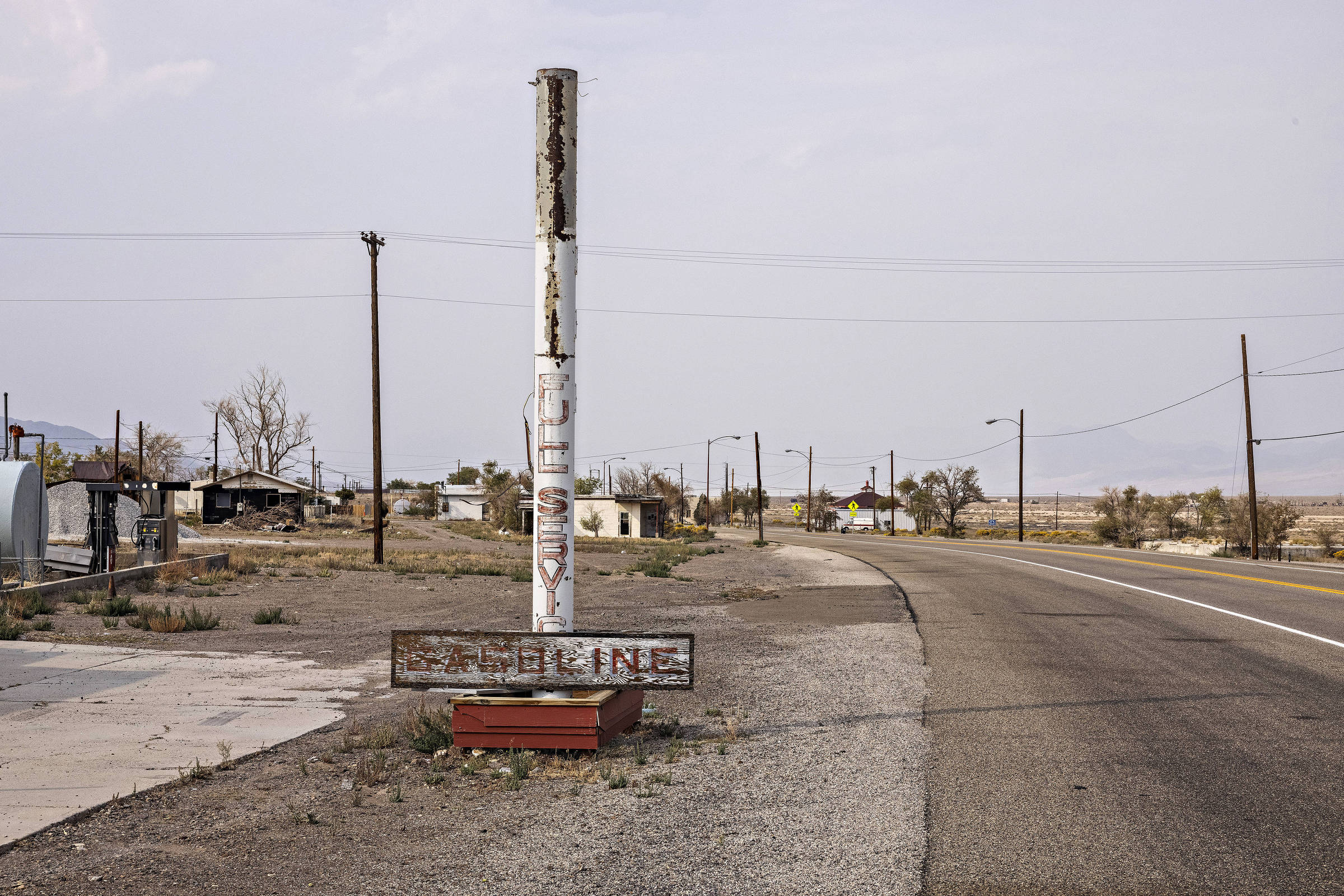
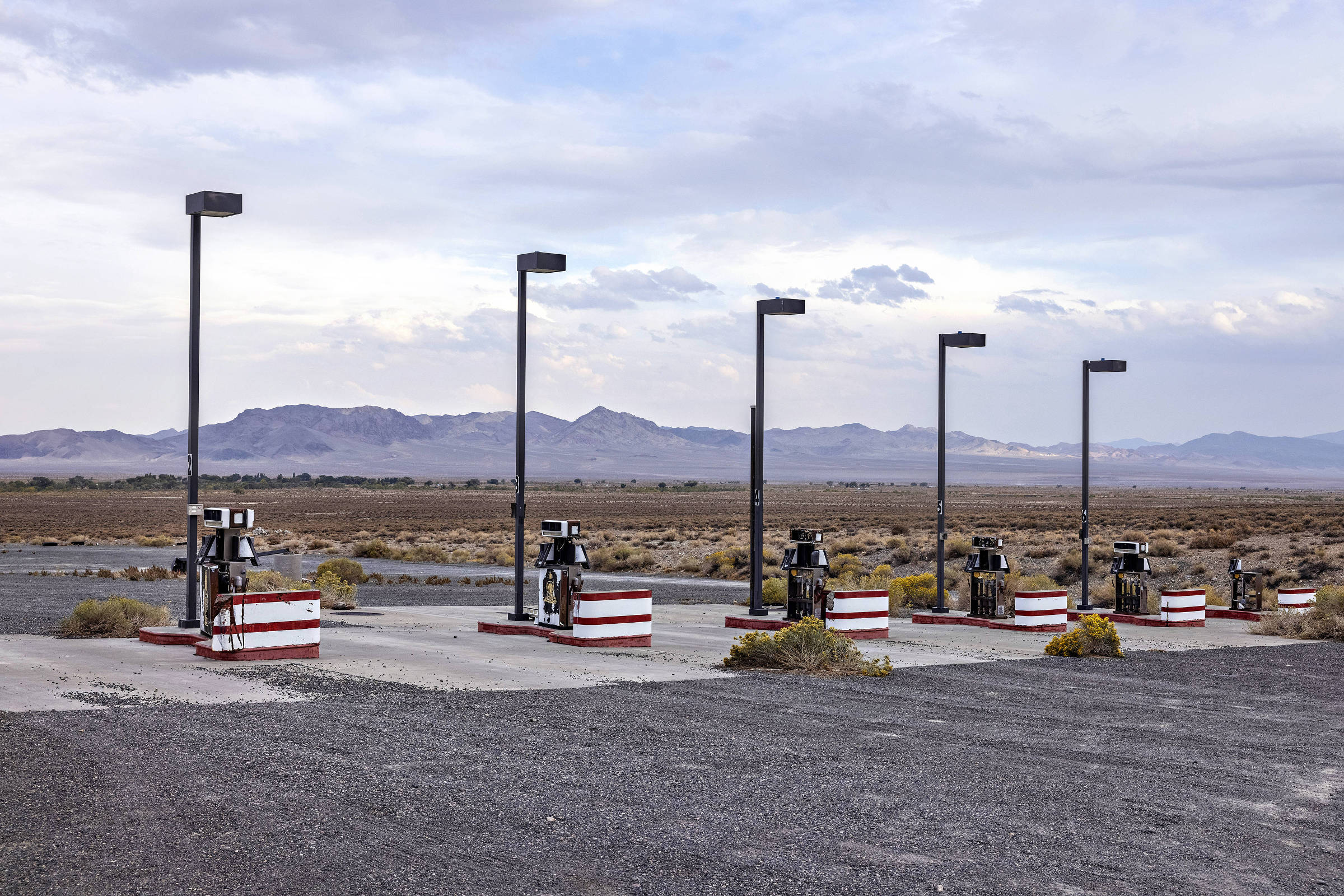
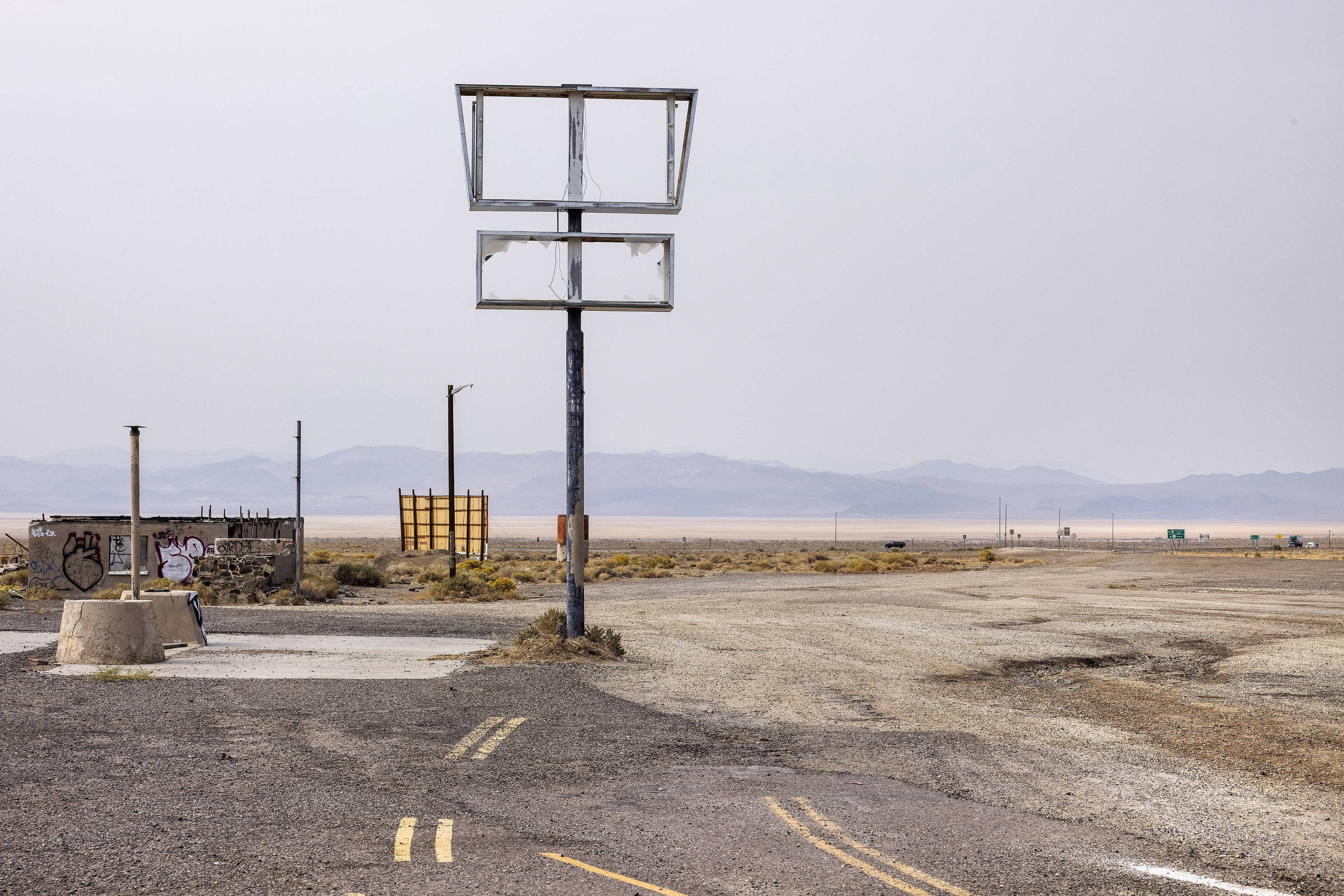
Abandoned gas stations on US-95 highway in the state of Nevada Lalo de Almeida/Folhapress
It was on this roadmap that, in April, Joe Biden announced an ambitious new goal of halving US greenhouse gas emissions by 2030 —and neutralizing them by mid-century.
The US president hoped to lead solutions to the climate crisis and encourage other countries to commit to bolder goals to curb global warming to 1.5°C and avert worse environmental catastrophes in a world that has already warmed by nearly 1.1 °C.
In 2019, the US emitted 6.5 billion tons of carbon dioxide equivalent (a measure that matches the influence of other gases, such as methane, to that of CO2) and is today the second largest pollutant in the world, with 12.6% of the emissions. The leader is China, with 26.7%.
But Biden's task has not been an easy one. Seen as a cornerstone of his climate policy, the package he presented to Congress to accelerate the energy transition has seen cuts in values and faced resistance not only from Republicans but also from fossil energy advocate West Virginia Democratic Senator Joe Manchin.
Against the political obstacles, polls show that 55% of Americans are in favor of the bill's approval —the House passed the legislation in mid November and if the Senate does the same it will be the largest climate package the US has ever approved. "Because it's not about the weather, it's about people's lives, their livelihoods, their jobs. It's about having the infrastructure to support events that we see in Florida, Louisiana, Texas, everywhere," says Yoca Arditi-Rocha, executive director of the Instituto CLEO, which works to protect against the climate crisis.
In August, the UN Intergovernmental Panel on Climate Change attributed almost all of the global temperature rise to human activity —1.07°C from 1.09°C of the warming of the atmosphere ever measured since the early 20th century. In the worst-case scenario, it will be another 4°C or 5°C, plus immeasurable catastrophes.
Countries like the US have delayed the containment of pollutant emissions and gone against what scientists warned, subsidizing fossil fuels.
Now they are trying to remedy it. In early November, during his speech at COP26, the UN conference on the climate crisis, Biden admitted the delay, but said the US will change its posture and lead by example. "That's why my government is working overtime to show that our climate commitment is action —not words."
It is clear that there is a huge challenge for the US to deliver a domestic agenda the size of its global ambitions in terms of the climate crisis. The clock is ticking, and the American president will need more than speeches to put politics where, in fact, public will is.
Translated by Kiratiana Freelon

Oil extraction well next to a truck parking lot near the city of Odessa, Texas Lalo de Almeida/Folhapress
